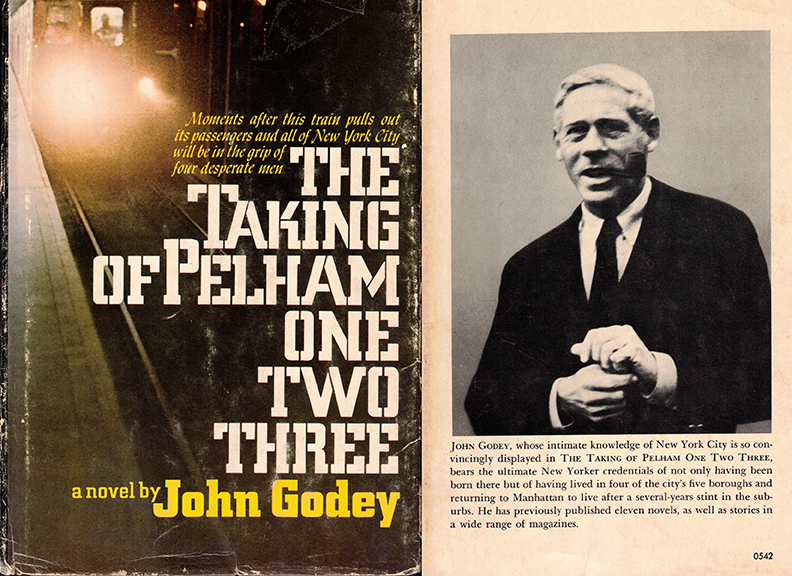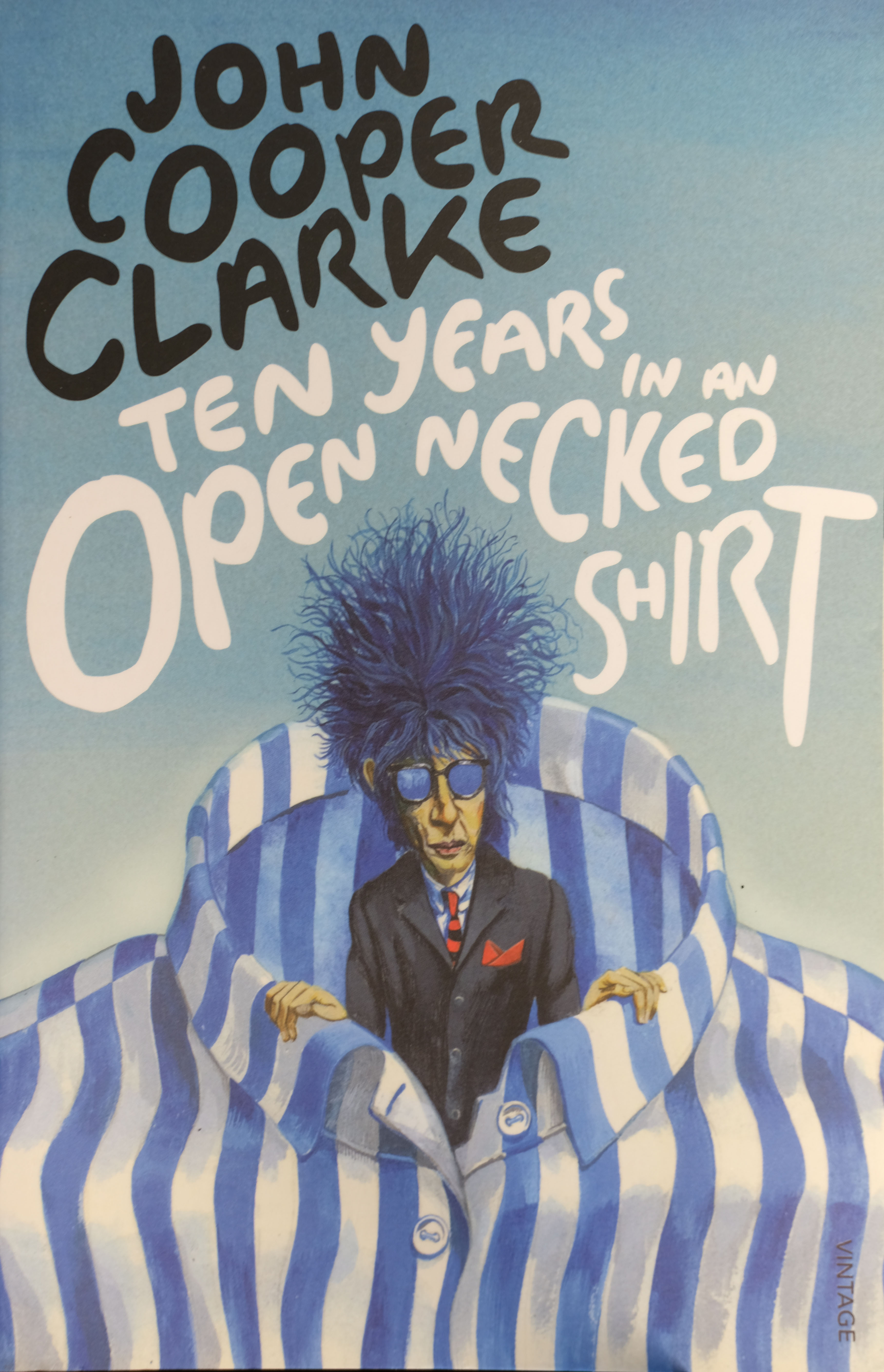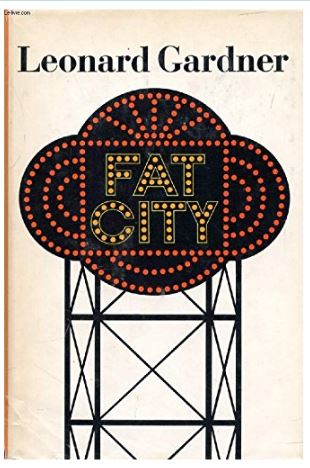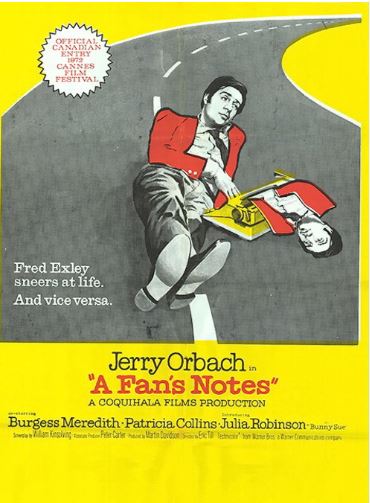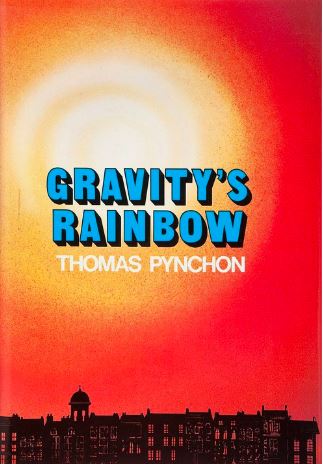Interviewed by Zoltán Abádi-Nagy in the Paris Review
ISSUE 105, WINTER 1987

Giddy for Gaddis: An Interview with Steven Moore
From – The Collidescope
George Salis: How did you first become giddy for Gaddis?

Steven Moore: Giddy for Gaddis: great title for my autobiography. I first learned of him in October 1975 when leafing through my father’s copy of Time magazine; there was a review of J R, which had just been published, and a sidebar on The Recognitions, which had been reissued in paperback a year earlier. The reviewer described the latter as a kind of American Ulysses, and since I was a Joyce junkie at the time, I sought it out and was blown away by it. I read J R a few months later and realized anyone capable of writing two such masterpieces was a genius. And when I discovered that hardly anything had been written on Gaddis in the twenty years since The Recognitions appeared, I decided to abandon a hopelessly ambitious lexicon on Finnegans Wake that I had been compiling, and decided to devote my critical energies to Gaddis instead.
GS: You made some minor corrections with the new NYRB reprints of The Recognitions and J R. How would you justify this to scholars who believe that an original text is ‘sacred,’ as it were?
SM: Nothing is “sacred,” especially texts. (That’s too easy; who do I think I am, Oscar Wilde? I’ll start over.) That attitude is based on the assumption that a writer has the combined skills of a professional typist, an erudite copyeditor, and an eagle-eyed proofreader. They don’t, and in fact some lack any of those skills. I spent eight years as an editor, and learned that even those writers who carefully prepared their manuscripts and slowly proofread the typeset texts—like Gilbert Sorrentino and David Markson—missed a few things. In Gaddis’s case, he missed a lot: he made over forty corrections when The Recognitions was reprinted in 1962, and forty more when Penguin reissued it in 1985. For the latter, Gaddis adopted some errors I pointed out in my Reader’s Guide (1982), and even asked me to tell him of any other errors or irregularities I had noticed. I sent him a list, and he adopted most of my suggestions. Based on what he accepted and rejected, I felt confident in correcting a few more things in the NYRB edition that I noticed in later years, as well as correcting new errors committed by their typesetters. A freelance proofreader and NYRB’s managing editor, Sara Kramer, found a few things I missed—mostly inconsistencies, like “finger-nail” vs. “fingernail”—but overall I took a conservative attitude and corrected only outright errors. I’m sure we missed a few things, for no one is perfect. By the way: Gaddis got much better as he grew older: he made only a handful of corrections to J R, and hardly any to his later novels.
GS: The Recognitions was really not that difficult to read, especially when referring to your guide during moments of highly compact allusion (which is only found in the first couple chapters or so before the book’s allusions lighten to a relative degree). Are we just egotistical geniuses or is the reading public at large a bunch of morons or is the notion of difficult often revealed as a myth in the presence of some honest effort on the reader’s part?
SM: The Recognitions is more challenging than most novels, but an “honest effort” will get you through. It also depends on what kind of reader you are, and whether you choose to make it difficult. The critic Sven Birkerts once said that he needed to understand each sentence completely before moving on to the next; that method will likely spoil the pleasure of reading any challenging book, from Ulysses and The Cantos onward. It’s best just to go with the flow the first time, and save the closer examination for a second reading. Nabokov said a first reading of a work of capital-L Literature is just a warm-up for a second reading.
GS: How does one go about making a reader’s guide such as the one you wrote and published in 1982? I’d imagine that the task would be tenfold more difficult without the internet, though slightly easier when communication with the author is possible.

SM: I used as a model similar books on Ulysses. I bought a few packs of 3 x 5” index cards, then wrote down every item that I felt needed annotating. I did the easy stuff first—unusual words that I could find in a good dictionary, quotations from Shakespeare and the Bible, historical references, etc.—just as you do the outside borders of a jigsaw puzzle first. As it happens, at the time I had been reading some of the same nonfictions books Gaddis used for source material, like Frazer’s Golden Bough and Graves’s White Goddess—and I knew a lot about religion, mythology, and the occult, which helped. Also, a few dissertations on The Recognitions appeared as I was working, so I picked up many items from them. After that, it was just countless hours in various libraries tracking down stuff, which—yes!—was considerably more difficult in the pre-internet days.
I had some serendipitous discoveries, others were the result of Sherlock Holmesian deduction, but I didn’t get any help from Gaddis. I wrote to him in August 1979 when I was about 85% finished and asked if he had a list of the source books he used (beyond those I already knew about); he said no, and simply wished me “luck with what may be an act of folly approaching that of having written the book in the first place.”
GS: What are some novels you think would benefit from a similar reader’s guide treatment but have yet to receive it? I’d wager Darconville’s Cat would benefit greatly from one.
SM: It would indeed, and in fact I started working on one in 1983, but then decided to go back to grad school to get a PhD and abandoned it. I think the novels of the aforementioned Sorrentino and Markson would likewise benefit from such treatment, plus Gass’s Tunnel, Danielewski’s House of Leaves, and some of Richard Powers’ novels. Conveniently, William Vollmann attaches explanatory notes to some of his novels.
GS: Would you agree that most writers shy away from being allusive in their fiction, let alone as allusive as The Recognitions, let alone as allusive as Ulysses? Is this due to some unique strain of anti-intellectualism in America?
SM: Most literary novelists are fairly well-read, but for reasons of their own decide that allusions are not necessary for their work. It’s just one tool in an author’s toolbox, and not appropriate for every job. Anti-intellectualism is indeed an overbearing presence in America, but I can’t imagine an author foregoing an allusion to Michael Drayton for fear his audience is unfamiliar with the 17th-century poet. I’m reading Philip Roth’s Sabbath’s Theater right now and it struck me how few annotations the novel would need; there are a few allusions to Shakespeare, Chekhov, and Strindberg, but well within the purview of the type of person who reads Roth.
GS: Franzen categorizes J R as the work of someone who has scorned all readership. What do you make of this charge, especially in light of a new generation of readers engaging with his work?

SM: He’s wrong. Gaddis always hoped to find an audience larger than academics and bibliomaniacs, and while he underestimated the difficulty of his novels for average readers, he didn’t “scorn” them. After he finished the complete draft of J R, he went through it and struck out as much as he could from the first few hundred pages because he wanted the novel to move as quickly as possible, so the reader wouldn’t get bogged down. He deliberately tried to write a more accessible novel with Carpenter’s Gothic, and he jettisoned his original plan for A Frolic of His Own to consist solely of legal documents because he was afraid it would scare off a larger readership. A character taunts “Willie” in The Recognitions for “writing for a very small audience,” but that was not a deliberate choice.
GS: Other than a general maximalist style, what are some nascent or realized tics and tendencies in Gaddis’ work that were built upon by later writers, such as Don DeLillo and Joseph McElroy?
SM: Greater verisimilitude in dialogue may be one, though Salinger is more deserving of that shift, and his taste for black humor was taken up by many after him. Gaddis may have encouraged writers to bring more erudition and specialized subject matter into their novels: not since Moby-Dick did an American writer make so much use of literary allusion, and his technical discussions of such things as alchemy, forgery and counterfeiting, mummification, you name it, may have encouraged later writers to do likewise. He featured more openly gay characters than was usual at the time, he was more openly blasphemous than any American novelist before him, and he wasn’t afraid to use obscenities, which most writers at that time were still pussyfooting around. And the alternation of profane talk with elegant, Jamesian sentences was striking; most writers back then chose one register and stuck with it, but he wasn’t afraid to mix things up, as many novelists have done since then.
GS: This is a guest question from Ryan Alexander: “I’d be curious to know Steven’s take, if any, on the role of gender and the maximalist novel. What factors have helped determine that so few (outside of Ducks, Newburyport or Miss Macintosh, My Darling) seem to be written by women? Or is this a misguided assumption? Should older novels like Middlemarch, as Jim Gauer attests, be included?” I would like to add to this question: Do you agree to any degree with the ‘controversial’ thesis of feminine creation put forth in Alexander Theroux’s Laura Warholic?
SM: I’ve been asked that before, and I still don’t have a good answer. In addition to Middlemarch, there have been some big, maximalist novels written by women in the past, such as Murasaki Shikubu’s Tale of Genji and Mary Wroth’s Urania, and a few recent ones like Ursula Le Guin’s Always Coming Home, Marisha Pessl’s Special Topics in Calamity Physics, Vanessa Place’s La Medusa, and Karen Tei Yamashita’s I Hotel. And some women have written shorter novels in a maximalist style (Frances Newman, Djuna Barnes, Georgiana Peacher, Greer Gilman, Rikki Ducornet). But in general, it doesn’t appear to be a mode that appeals to the ladies.
One obvious historical reason is education. Until recently, few women had the same level of education that male maximalists enjoyed, and lacked their huge vocabulary and prodigious reading. The few women who did, like the 17th-century Margaret Cavendish, were looked upon as freaks. Educational advances over the last century haven’t produced that many female maximalists, but any explanation for that will lead to gender issues that I’d prefer to skirt. Women can speak for themselves on this matter.
And no, I don’t agree with Theroux’s feminine creation thesis, and in fact remember groaning to myself when I first read that chapter in manuscript.

Photograph © Miriam Berkley
GS: This is a guest question from Aiden Heavilin: “I’m interested in Moore’s thoughts on the political dimension of Gaddis’ work, and how to reconcile his almost conservative distaste for modernity and technology with his equal and opposite disdain for backward right-wing fundamentalism. Gaddis seems clear on what he’s against; what, if anything, is he for?”
SM: He’s for the so-called conservative values of honesty, decency, integrity, tolerance, sincerity, education, culture—but he really means it, while they don’t. As he shows in his novels, many conservatives are dishonest, opportunistic, intolerant, hypocritical, under-educated, and uncultured. Evangelicals, who regard themselves as guardians of conservatism, are the dumbest, most dangerous people in his novels, and the most selfish, mean-spirited people in his books are the CEOs and upper classes who mindlessly vote Republican in every election. It’s true he didn’t care for modern art and music, but he was more concerned about the dehumanization that accompanies many technological “advances,” and was deeply disappointed that America didn’t live up to its vaunted values.
GS: You met Gaddis at least once. Can you reflect on what he was like as a person, the “human shambles,” as he put it?
SM: I was born in California, reared in Colorado, so he struck me as very East Coast, with old-school Harvard manners. He was rather reserved around me, knowing that I was continuing to write about him, and in fact one night he even joked about it. He invited me to stay at his place in East Hampton for a few days after I moved from Colorado to New Jersey (to attend Rutgers), and one night critic Frederick Karl and his wife visited; after Karl passed along a tidbit of gossip about another author, Gaddis quoted, “A child’s among you taking notes, and, faith, he’ll print it,” then gestured at me and repeated, “and, faith, he’ll print it.” Everyone laughed, but that night I did indeed take notes afterward and later discovered he was quoting Robert Burns (modernized from “On the Late Captain Grose’s Peregrinations”).
GS: Gaddis’ first novel was remaindered (he even made some metafictional jokes in the book about writing for a very small audience) yet now his major works are reprinted through NYRB and it’s not the first time they’ve been reprinted either. Was it a personal struggle for you to get others to pay attention to Gaddis and are you content overall with the…recognition his work has received up to this point?
SM: I never regarded it as a struggle, more like a fanboy spreading his enthusiasm to anyone who would listen. And I am indeed happy with how Gaddis’s career turned out: the year after my Reader’s Guide was published, he was awarded one of the first MacArthur “genius” awards and a special session on him was held at the annual MLA convention, then his first two novels were reprinted by Penguin (and kept more or less continuously in print ever since), followed by a steady flow of books, articles, and dissertations about him, numerous translations of his novels in a variety of languages, etc., etc. It is extremely gratifying to see that an underappreciated writer I discovered when I was a 24-year-old substitute teacher has come to be regarded as one of the greatest American novelists of the 20th century. I bet on the right horse.



Steven Moore is the author of a two-volume survey of world literature titled The Novel: An Alternative History. He has also written extensively on modern literature, and for years was managing editor of Dalkey Archive Press/Review of Contemporary Fiction. His new book, Alexander Theroux: A Fan’s Notes, was published by Zerogram Press. You can find his website here.

George Salis is the author of Sea Above, Sun Below. His fiction is featured in The Dark, Black Dandy, Zizzle Literary Magazine, House of Zolo, Three Crows Magazine, and elsewhere. His criticism has appeared in Isacoustic, Atticus Review, and The Tishman Review, and his science article on the mechanics of natural evil was featured in Skeptic. He is currently working on an encyclopedic novel titled Morphological Echoes. He has taught in Bulgaria, China, and Poland. Find him on Facebook, Goodreads, Instagram (@george.salis), and at www.GeorgeSalis.com.
A Lost Battle
An interview with US author William Gaddis
about his novels, the fight against chaos.
and the language of justice.
| Spiegel: Mr. Gaddis, when you won the National Book Award in 1976 for your novel J R, will you explain what you meant when you said that a writer ought to be read and not heard? Gaddis: Nowadays there is an obsession with the individual that’s become a curse. No one’s interested any more in the written word, but only in the author presenting himself in public. It’s all just publicity and spin that hasn’t got anything to do the work itself any longer. Spiegel: There was a time when you yourself put up with the discrepancy between the demands of your work and the cool reaction on the part of the reader. Gaddis: Yes, my agent told me once: “you have made the most peculiar literary career that anyone can imagine.” Today I feel my own situation is a fascinating paradox. I don’t worry too much about it. Spiegel: In 40 years except for four bulky novels, you have published nothing else – no short stories or essays. Were you fully occupied as a novelist? Gaddis: Yes, because that’s what I do. And I don’t want to do something half heartedly that I don’t know anything about. Novels are my trade, my calling. Spiegel: Earlier you worked in the Public Relations domain. Was this as a livelihood or as research? Gaddis: Purely as a livelihood. When my first novel, The Recognitions, appeared in 1955, I was expecting it to be a success. But the book quickly disappeared from the market. I had recently got married, then along came two children. So I had to get a job. It had nothing to do with the pursuit of literature. I spent five years in a pharmaceutical company writing speeches and what have you and suffering for it as well. Spiegel: Nevertheless, you gained some inside knowledge of the business world for the roguish novel J R? Gaddis: Quite a few. Especially the feeling that many men have, who have to support a family and keep a job that they hate. This is caused by our system: making men hate their job. Spiegel: So you gave this personal experience to your novelist character Thomas Eigen? Gaddis: Yes, very much so. Eigen thinks he’s an enormously important person, but must work in a job he hates. He has no respect for his job. To begin with, I identified with him, but then he developed into a character, who was constantly going about complaining. He really got on my nerves! It’s a weird experience to have while you’re writing. Spiegel: J R originally appeared more than 20 years ago. Today it is still a highly up-to-date novel about the financial world and stock markets. Are you still astonished by their goings on? Gaddis: Right. The novel predicted the 80s, the madness of Reagan’s version of the free market, “Reaganomics”. Today it’s a lot worse. But no one has read the novel, and so no one’s noticed a thing. Spiegel: The main figure, J R, is an eleven-year old prodigy, who so to speak puts together a business empire on the telephone. Was there an actual model? Gaddis: No. Maybe I just simply thought about how I was as an eleven-year old. The reason why I had him as an eleven-year old is so that he could be completely amoral … Spiegel: And completely innocent. Gaddis: Right. That’s exactly the difference between children and adults. They are aware of their amoral errors, the adults in contrast have to connive and ignore them. That’s what America is all about: they still have to get on with it with their eyes wide open in order to be successful, and make money. J R looks around him and thinks: Aha, so that’s how you do it. At times he just doesn’t know where he’s supposed to put a comma in a figure that’s so important that it can make hundreds of people jobless. He builds up a paper empire that’s worth millions and throws the stock market in chaos. He believes so to speak in his own myth. Spiegel: J R is also a novel about the breakdown of communication. But the book’s noise and its chaotic speech are almost given a musical structure. Don’t you believe in this decline? Gaddis: Yes. I see it as a decline, entropy, breakdown. But a musical structure? Well I suppose deep down I’m a musician at heart. Spiegel: The dialogues, which comprise the novel, at times seem to be recorded. Gaddis: Right. The speakers don’t realise what they’re saying. But they simply aren’t able to listen to what they’re saying. Spiegel: Your fourth novel A Frolic of His Own is a novel about justice, a courtroom novel. How did you get the idea to write about such a dry subject? Gaddis: Well the idea came pretty much as a whole. To begin with language: law is language whether it be in the court or on paper. This fascinated me and I read books, legal commentaries and began to enjoy reading them. Basically, they aim at a precise use of language. Then came the question: what’s wrong with America? What happens to a civilization, its undercurrents when it becomes legalistic? Spiegel: It says in your novel that justice has the duty to impose order on the chaos of daily life. Is that not also the duty of literature? Gaddis: No, even literature falls into chaos. Things fall apart, everything breaks down, even language. That’s how I see it. Spiegel: But your novels seem like rocks among breakers. Do you see them any differently? Gaddis: Maybe that view’s unavoidable. Yes, people like us still make the same attempt: We have this strong yearning for order. A lost battle. Spiegel: What makes you so pessimistic? Gaddis: I’ve always been so from the beginning. When I was twenty, I read Spengler’s vision of deterioration and it overwhelmed me. In my four novels, hope is on the decline. America today? I am deeply convinced that no good will come of it. This terrible paradox that the rich will always get richer and the poor always poorer. And the race question – how is it going to be resolved? I don’t see any way out. Spiegel: Have you ever thought about living anywhere else than the USA? Gaddis: No. Graham Greene said: England made me. The same goes for me and America. I am a product of America. I am somebody trying to understand this country, but observes an ever gloomier picture. What makes America matter? It’s a land where one per cent of the population has at its disposal about forty per cent of the nation’s assets – very interesting for a writer. Spiegel: Satire, black humour, scenes reminiscent of slapstick, all of these make the gloomy prognosis of your books bearable. Humour as the last means against the absurdity of the world? Gaddis: As far as I can see, yes. It’s the only way out I can find. The whole situation is absurd: we still live in fictions and I like to put forward a view that fiction is the only possibility there is of getting us through the night. Spiegel: Is everything finally just a huge joke? Gaddis: I wouldn’t say that. The question “why all this?” has always been with me. Now as an old man, I’ve come to the conclusion that we haven’t answered the question at all. I think Hans Vaihinger is relevant. He was a German philosopher, who wrote that pure morality must always be based on a fiction. We must act so too, as if our duties were imposed upon us by God, as if otherwise we would be punished for our misdemeanours. Spiegel: Do you also read German literature? Gaddis: Earlier at college, I was under the influence of the Romantics, especially Novalis. For The Recognitions, Goethe’s Faust had been very important. And then Wagner’s Rheingold for J R – almost too much so to tell the truth. A dwarf that grabs money and wants to renounce love for money, that I couldn’t resist. I’m now very enthusiastic about Thomas Bernhard. He is excruciatingly funny. Besides he has a basic concept that I’m fascinated by: his own delusion is aimed at himself. | |
| “‘Eine Vorlorene Schlacht'” Der Spiegel 41, 1996, p. 266 – 269. Translated by John Soutter | |


